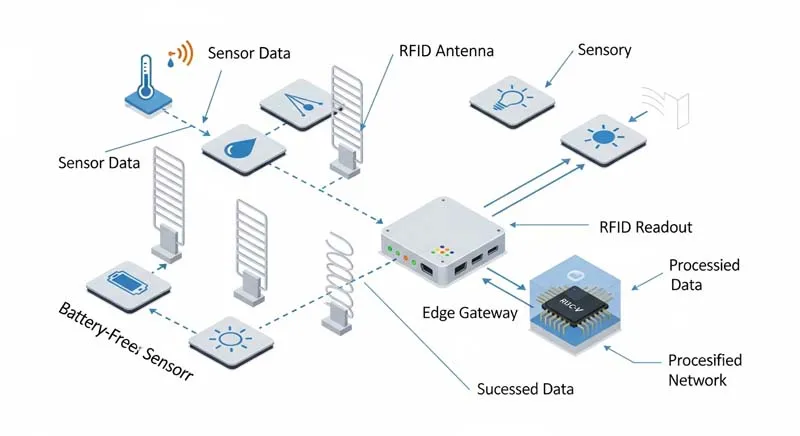Passive IoT and edge computing now lead IoT change. Moreover, they drop cloud costs fast. In fact, 2025 sees 21.1 billion connections. Meanwhile, 70% of data on-site. As a result, smart happens everywhere—not just in clouds.

What Is Passive IoT?
Passive IoT and edge computing start with battery-free tags. Thus, tags use radio waves for power. A tag costs only $0.10. Yet, it reads temperature, humidity, or motion. Next, 5G RedCap wakes billions of tags. Then, data jumps to edge gateways. Additionally, RISC-V cores make work as one.

Edge Computing: Local and Fast
Passive IoT and edge computing keep data close. So, delays fall under 10 ms. Edge chips detect issues instantly. In turn, 70% of data never reaches the cloud. Therefore, privacy stays safe. Together, they sense, think, and act locally.
Why Choose ?
– Cost: Tags cost 1/20th of active ones.
– Scale: Billions connect without limits.
– Green: Carbon drops 30%.
Furthermore, China’s AI platform and 3GPP standards back passive IoT and edge computing.
Real Uses of Passive IoT and Edge Computing
1. Warehouses: RFID + edge AI hits 99.8% accuracy.
2. Power Plants: Sensors cut fixes by 30%.
3. Hospitals: Vitals stay inside the building.
4. Farms: Drones water fields before cloud calls.

Challenges for Passive IoT and Edge Computing
Range is short. Edges are scattered. New risks appear. However, UWB + BLE and zero-trust fix them. Hence, passive IoT and edge computing grow strong.
2025 Trends in Passive IoT and Edge Computing
6G will support backscatter natively. Meanwhile, micro data centers rise. Soon, chips will think on their own.

EELINK Communication brings 20+ years of wireless skill. From remote sensors to cold-chain platforms, EELINK connects assets, vehicles, and more. Above all, we turn passive IoT and edge computing into real value—simple, safe, and green.
